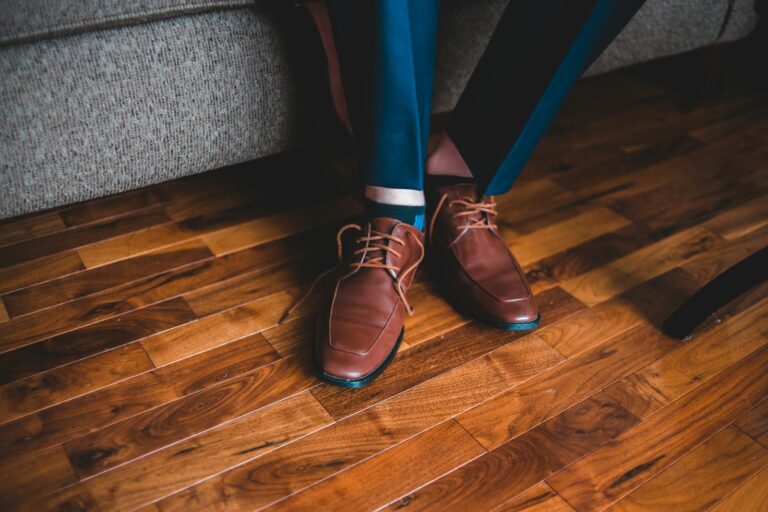Your wooden floors are a beautiful and valuable part of your home, adding warmth, character, and a touch of elegance to any space.
However, renovations, while exciting, can pose a significant threat to your precious flooring. Dust, debris, paint splatters, and heavy foot traffic can all leave their mark, causing scratches, dents, and even permanent damage.
But fear not, with proper planning and protective measures, you can ensure your wooden floors emerge unscathed from even the most demanding renovation project.
Protecting Your Floors Before the Renovation Begins: A Proactive Approach
Before the first hammer swings or paintbrush strokes, it’s crucial to take steps to protect your wooden floors from the inevitable wear and tear of renovations. The key is to create a barrier between your floors and the potential hazards of a construction zone.
This proactive approach will prevent damage from the outset, ensuring your floors stay pristine throughout the entire renovation process.
1. Thorough Cleaning: A Clean Slate for Protection
Before you begin covering your floors, ensure they’re impeccably clean. A thorough cleaning removes any loose dirt, debris, or sticky residue that might trap dust or become embedded in protective coverings.
Vacuum thoroughly, paying close attention to corners and crevices. Consider using a damp mop with a mild cleaning solution to address stubborn stains or grime. A clean surface will provide the perfect base for your protective layers.
2. Strategic Masking: Defining Boundaries for Protection
Masking tape is a renovation essential, and for your wooden floors, it’s a crucial tool for creating clear boundaries. Apply masking tape along the edges of rooms, around doorways, and anywhere you want to ensure a clean line between your covered and uncovered flooring.
This helps prevent accidental paint splatters, spills, or debris from straying onto your protected areas. Remember to use high-quality masking tape specifically designed for flooring, ensuring it adheres securely without leaving any sticky residue after removal.
3. Protecting Your Floors with Durable Covering: A Shield against Damage
The cornerstone of floor protection during renovations is a durable and well-fitting covering. Choose a material that offers a strong barrier against scratches, dents, and spills. Common options include:
- Drop cloths: These are affordable and readily available, but opt for thicker canvas drop cloths for better protection. Ensure they’re large enough to completely cover the flooring.
- Floor protection mats: These heavy-duty mats are specifically designed for construction and renovation projects, offering excellent protection against impacts and debris. They often come in various sizes and thicknesses to suit different needs.
- Plastic sheeting: While less aesthetically pleasing, plastic sheeting provides a cost-effective and waterproof barrier. Choose thick plastic sheeting to withstand foot traffic and potential damage.
- Construction paper: A less expensive option, construction paper can work well for lighter renovations. Choose thicker paper for greater durability.
Lay your chosen covering with care, ensuring complete coverage and smooth transitions to prevent tripping hazards. Secure the covering with masking tape along the edges to prevent movement or slippage.
Protecting Your Floors During the Renovation: Maintaining the Shield
Even with the most meticulous preparations, renovations are inherently messy and unpredictable. Dust, paint splatters, and spills are inevitable, making regular maintenance of your protective coverings vital. This ongoing effort ensures your floors stay protected throughout the renovation process, minimizing the risk of damage.
4. Dust Control: Keeping the Dust Away
Dust can be a relentless enemy to your wooden floors, settling deeply into crevices and leaving a lasting mark. Regularly sweeping and vacuuming the covered floor areas is essential to remove dust and debris before it becomes embedded. Use a vacuum with a HEPA filter for optimal dust removal, ensuring the air quality remains clean and your floors stay protected.
5. Spill Prevention: Quick Response and Thorough Cleaning
Spills are inevitable during renovations, but the key is to address them promptly. Have a dedicated cleaning kit on hand, including a sponge, rags, and a mild cleaning solution. Attend to spills immediately, wiping them up thoroughly to prevent staining or damage to your floors.
6. Foot Traffic Management: Designated Pathways for Safety
Foot traffic during renovations can lead to unwanted wear and tear on your protected floors. Designate specific pathways for workers and visitors to minimize the risk of damage. Use clearly marked pathways with construction tape or temporary flooring to guide foot traffic and prevent wear and tear on the covered areas.
Protecting Your Floors After the Renovation: The Final Touches
After the dust settles and the renovation is complete, it’s time to remove the protective coverings and reveal your pristine wooden floors. However, there’s still a final step in ensuring your floors remain protected and radiant: post-renovation cleaning and maintenance.
7. Post-Renovation Cleaning: Restoring the Shine
Once all protective coverings are removed, give your floors a thorough cleaning to eliminate any lingering dust, debris, or adhesive residue from the tape. Vacuum thoroughly, paying special attention to corners and crevices. Consider using a damp mop with a mild wood floor cleaner to remove any remaining residue. Allow the floors to dry completely before applying any sealant or polish.
8. Ongoing Maintenance: Preserving the Beauty
To maintain the pristine condition of your wooden floors, establish a regular cleaning schedule. Vacuum at least once a week to remove dust and debris. Consider a monthly or bi-monthly deep cleaning with a damp mop and a wood floor cleaner. Avoid using harsh chemicals or abrasive cleaners that can damage the finish.
Conclusion
Renovating your home is a rewarding experience, but it’s crucial to protect your valuable wooden floors from the inherent hazards of construction.
With a proactive approach to covering and maintaining your floors throughout the renovation, you can minimize the risk of damage and ensure your beautiful wooden floors emerge unscathed. A well-protected floor is a happy floor, allowing you to enjoy the beauty of your wooden floors for years to come.


